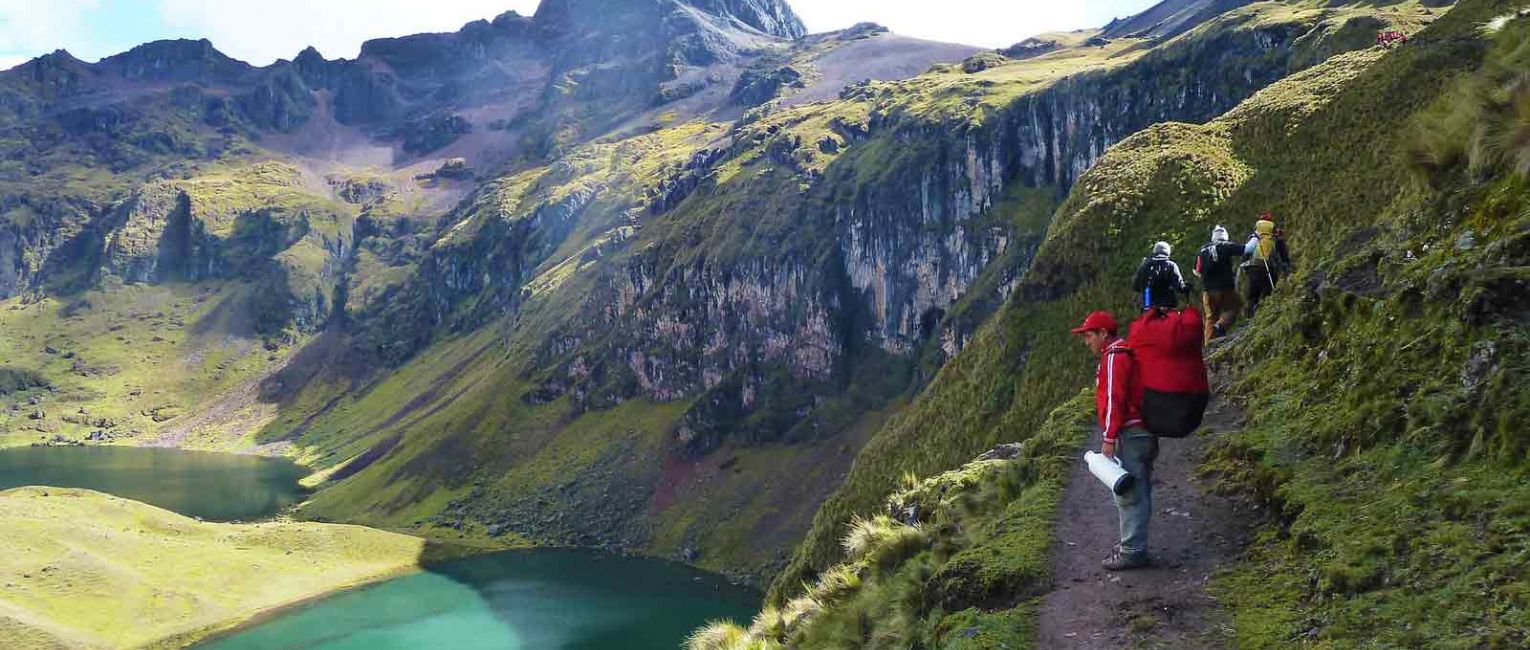
The Lares Trek vs The Inca Trail | Which One Should You Choose?
It’s not often you find yourself with the opportunity to wind through the ruins of Machu Picchu, and when you get there, you want to make the most of the opportunity.
Which always leads to one burning question.
The Lares Trek or the Inca Trail?
.jpg)
One of the questions we get asked the most from our prospective travelers planning a hiking trip to Peru is what are the main differences between the Inca Trail and the Lares Trek and which one they should book.
And to be honest, it’s almost impossible to give a definite answer as both are great hikes.
However, depending on what type of experience you are looking for, one hike might be better suited for you than the other.
Both hikes are 4-days / 3-nights in length and include camping at night in tents, or the option of a hotel on certain parts of both trails.
Below we have outlined some of the similarities and differences between the Inca Trail and the Lares Trek to help your decision on which one to book.
Inca Trail
.jpg)
For hikers, very few places in the world are able to captivate your attention, create a sense of wonder, and draw you in like the Inca Trail.
An ancient rocky path, crossing over gorges and deep cliffs, overlooking glacial valleys and snowcapped mountains, wading through tropical forests, all drawing you into the Andean mountains and some of the most amazing archaeological mysteries of South America.
The views of Machu Picchu from the Sun Gate are stunning and give a good perspective of the grandeur of the ruins.
It leaves one wondering how these ruins could ever have been built so high up in the mountains.
For those wanting to take on the Inca Trail, here are some things to note before planning your trip.
How Difficult Is The Inca Trail?
.jpg)
We would classify The Inca Trail as challenging, but certainly doable for hikers of all experience, as long as you know what to expect and prepare adequately.
From start to finish, the Inca Trail is around 28 miles / 48 km.
Over 4 days, that doesn’t sound so bad, right?
The testing part of the 48km is that it takes place over steep inclines, sharp descents, rocky cobbled uneven ground.
.jpg)
However, the part most travelers find difficult is not the length or even the ascents. It’s the high altitude.
At higher altitudes, the air is thinner, and there is less oxygen available.
With high-altitude trekking, your heart rate can increase faster, you may get short of breath easier, and you may feel fatigued faster than you would on a typical hike.
If this sounds like it might put you off planning the Inca Trail, honestly, it’s not so bad.
.jpg)
In parts, it’s challenging and very tiring, and occasionally you can get soaked with tropical showers.
But with proper preparation and acclimatization, hikers of all experiences can still enjoy this trail even at high altitudes.
And the sense of accomplishment alongside the stunning, memorable views are worth it above all else.
When Is The Best Time Of Year To Do The Inca Trail?
.jpg)
The ideal trekking season for the Inca Trail is from April to November, with peak season being from June-August.
We prefer the months from April-May, as the landscape is very green and picturesque.
Also, September is another great time with fewer crowds and good weather.
What Is The Capacity Of The Inca Trail?
Due to restrictions that were put in place by the Peru Government, only 500 people a day are allowed to start the Inca Trail.
This restriction was put into place to help with trail erosion and to limit the crowds.
Since the Inca trail is extremely popular with people booking from all over the world, the permits for those coveted 500 spaces sell out well in advance.
This is not ideal for the spontaneous traveler who loves to leave trip planning to the last minute.
However, there are several great alternatives to the Inca Trail that also provide a wonderful hiking experience and that can be booked fairly last minute.
The one we are most familiar with at BikeHike Adventures is the Lares Trek.
Lares Trek
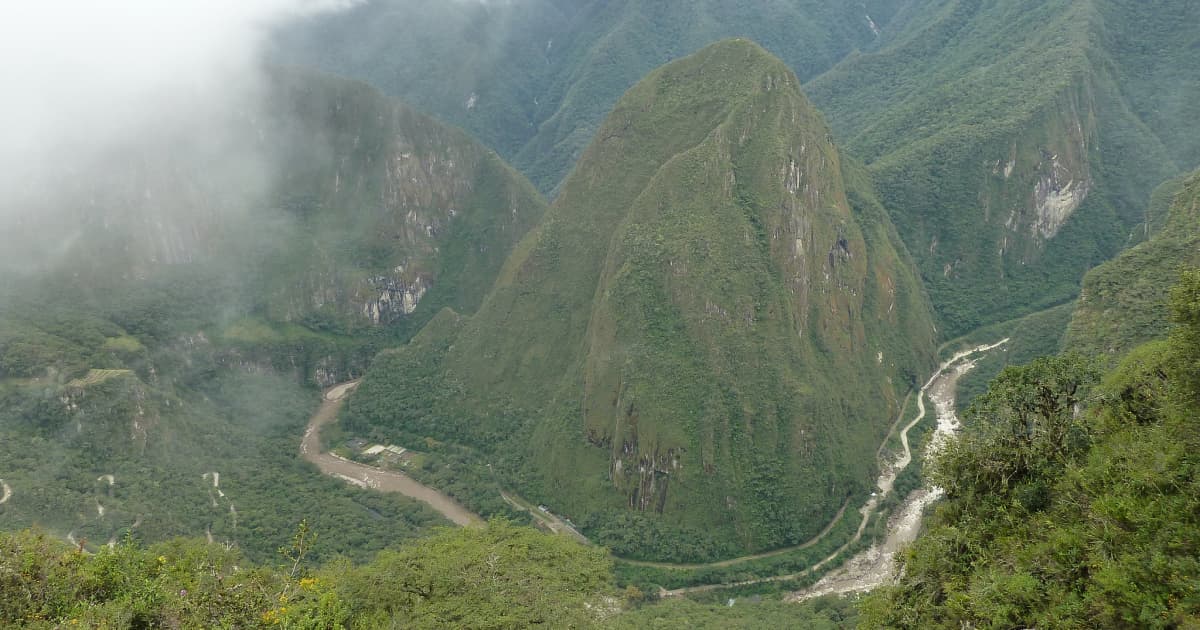
There are actually many “Inca trails” in Peru, not just the well-known “Inca Trail”, that have been converted into hiking trails that follow ancient Inca routes.
One of these is the Lares Trek, and there are several routes you can take on the Lares Trek, but we at BikeHike, trek a more remote section of the trail.
On the Lares Trek, you are surrounded by pristine wilderness deep in the Andes Mountains with lakes, valleys and grazing llamas.
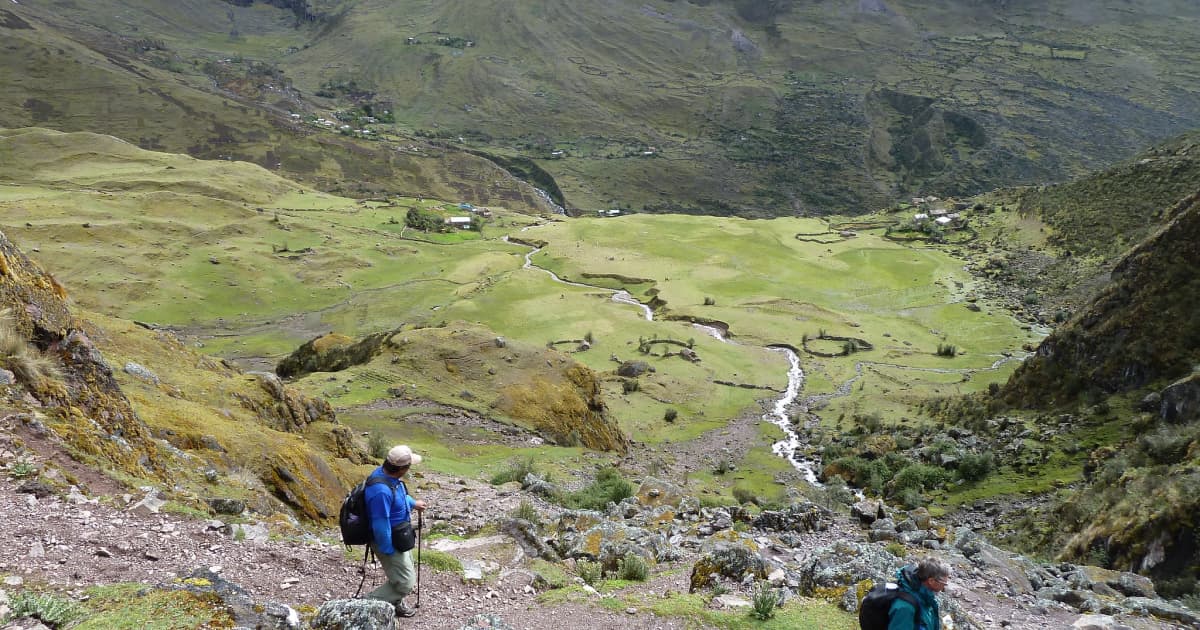
The trail passes through small villages where there are opportunities for cultural interaction with the local Quechua people.
You might even get invited into a family home for an impromptu cup of mate tea.
Before planning on taking on the Lares Trek, here are some things to know before your trip.
How Difficult Is The Lares Trek?
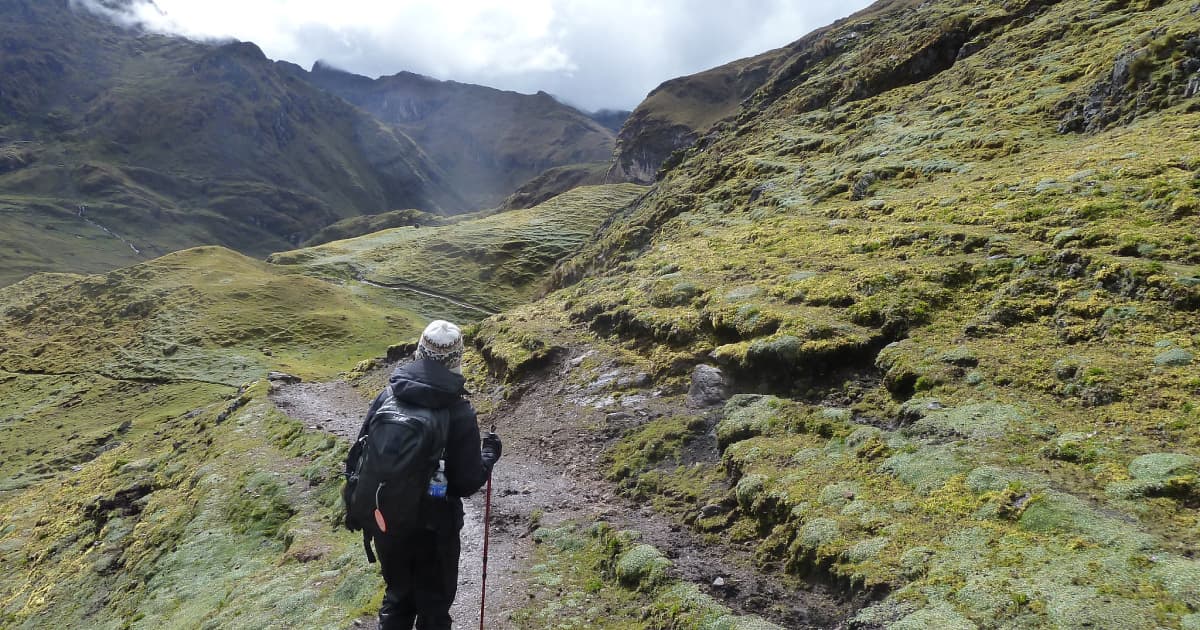
We classify the Lares Trek as more moderate compared to The Inca Trail.
All in all, the Lares Trek is around 20.5 miles / 33km long.
Unlike the Inca Trail, there are no serious vertical inclines and descents or stairs along the way, you will be mostly hiking at slight ascents and a lot more even ground.
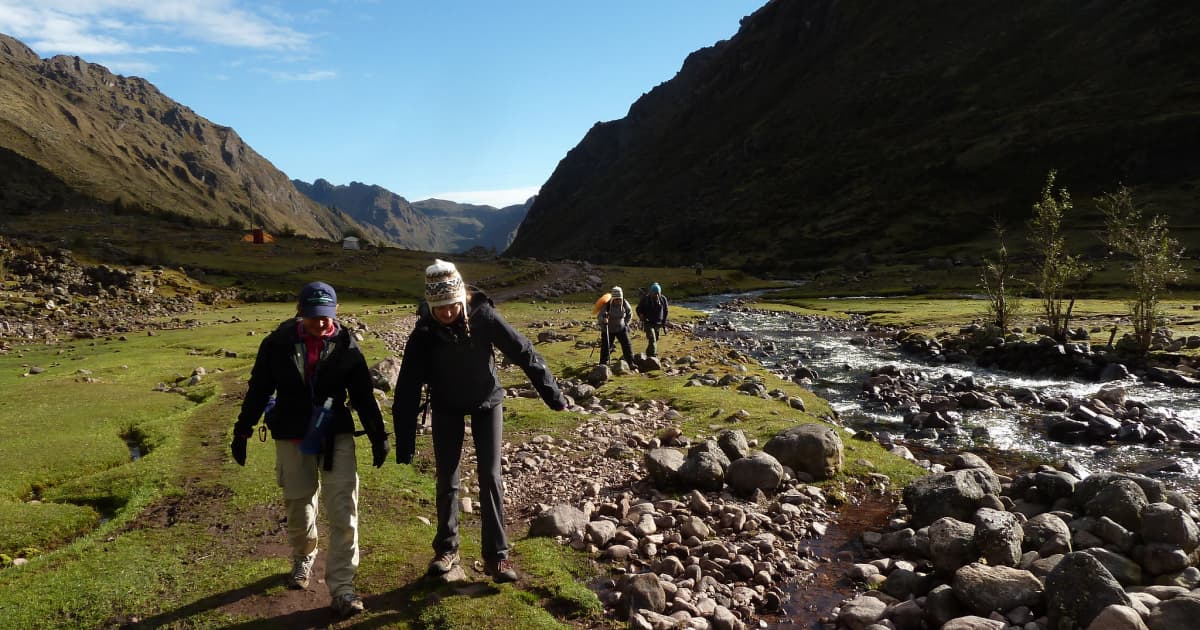
There is still the altitude to consider, which is much the same as the Inca Trail.
The highest altitude you will reach on the Lares Trek will be around 4800m.
Much like the Inca Trail, the altitude is the part most travelers find difficult.
The air is thinner and there is less oxygen available, meaning you will tire that little faster than a typical hike, and feel fatigued much faster than you expect.
When Is The Best Time Of Year To Do The Lares Trek?
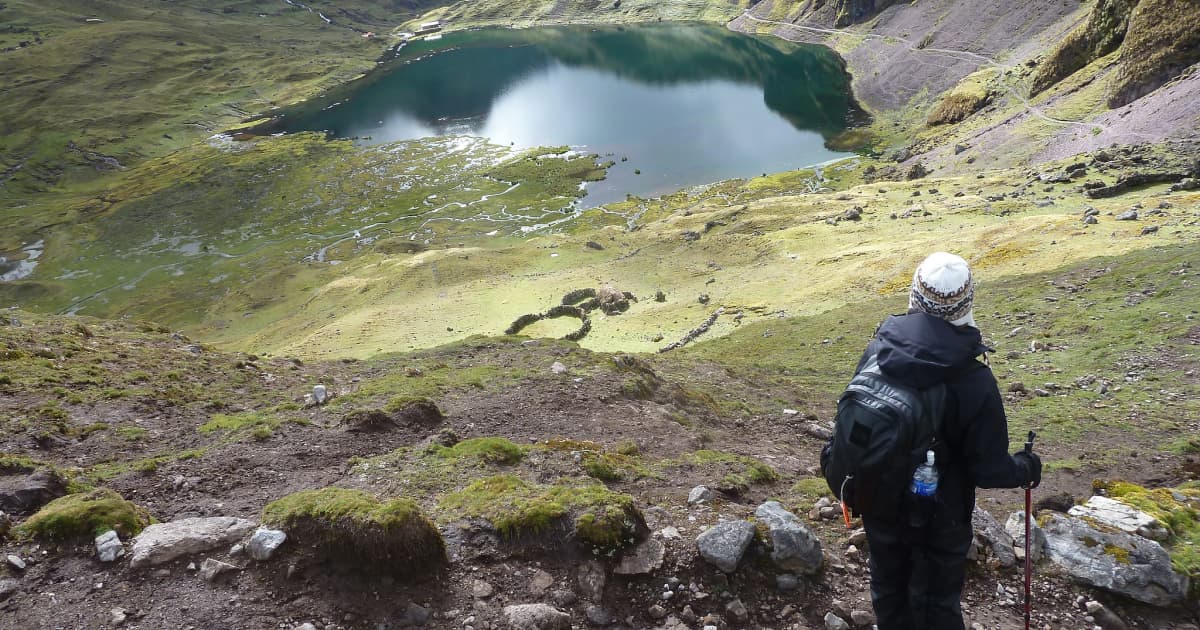
The ideal time to do the Lares Trek is from April to November, peak season being from June-August.
Much the same as the Inca Trail, it is best to take it on in April - May for the best landscape views, or September for the best weather (and less chilly nights.)
The weather is also something to consider when planning your trip.
Peru is mostly warm and sunny, but during the wet season (roughly mid-October to mid-April) it can be more humid and rainy.
And at night, even in the warmest months, the temperature can drop significantly, so if you're camping you'll need some warm clothes for overnight.
What Is The Capacity Of The Lares Trek
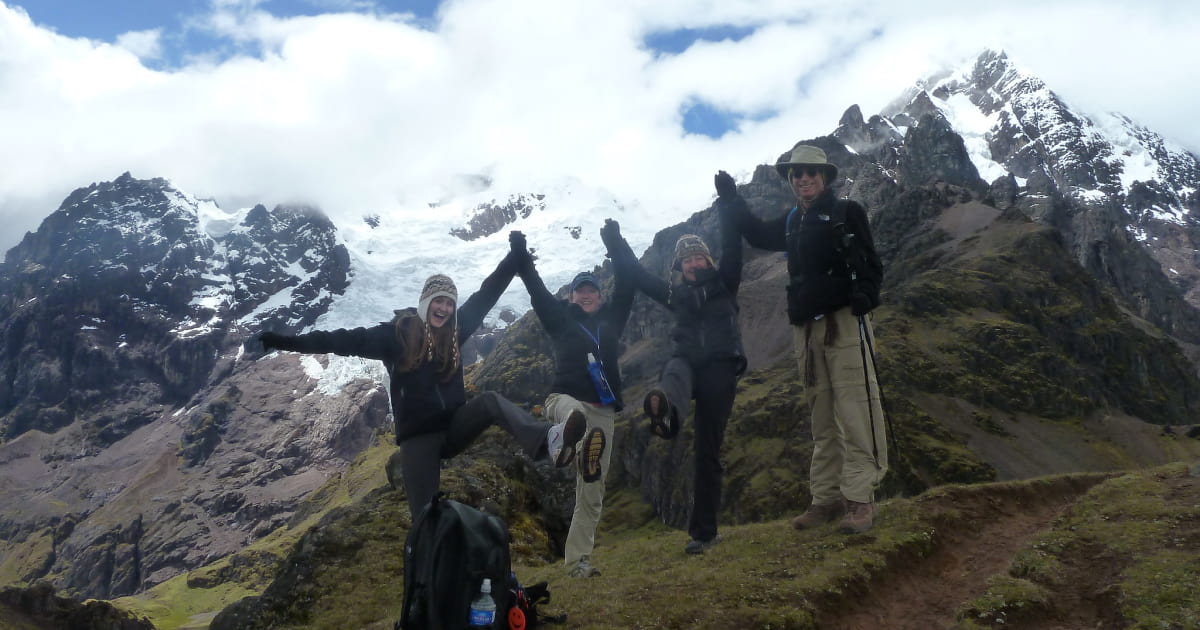
There is no capacity on the Lares Trek, unlike the Inca trail where it is limited to 500 per day. However, during the four-day hike, you might only see 5-10 other hikers a day.
So, if you are someone who prefers a more peaceful hiking experience, or just want to company of your travel group - the Lares Trek is for you.
What Are The Differences Between The Inca Trail & The Lares Trek?
The Inca Trail doesn’t have the cultural interaction like the Lares Trek, but it does have several Inca ruins built into the mountainside.
On both trails, the terrain is a combination of dirt paths, forest, scrambling over rocks and streams, and plenty of uphill and downhill.
The real main difference between the two is that the Inca Trail has stairs, while the Lares Trek does not.
The Inca Trail also finishes at Machu Picchu, leaving you with the same sense of accomplishment that you have reached your goal.
How To Pack For The Lares Trek & Inca Trail
.jpg)
On both trails, you are only responsible for carrying a daypack with what you need for the day – i.e. water, snacks, rain gear, camera, etc.
On the Inca Trail, there are porters who carry your main gear, whereas on the Lares Trek, there are llamas that carry the gear.
On both treks, there are cooks with you who make three hot meals a day, as well as provide delicious snacks. All of the meals are served in a dining tent.
As for facilities, both hike on the Lares Trail there are no established washrooms. The hike guides set up a toilet tent to provide privacy.
In comparison, the Inca Trail has washrooms with flush toilets available, albeit they can be very busy and not the most hygienic.
Here are some items we recommend to have for both trails:
Waterproof Clothing: While it can be quite warm and you don’t want to wrap up in any extra layers, you also don’t want to find yourself absolutely soaked in a tropical shower. A long poncho might be enough for protection, but some travelers also prefer bringing waterproof pants.
Extra Batteries & Charging Packs: You are not going to find any electrical outlets while out on the trail, so if you want to catch those amazing views on your camera or phone don’t forget an extra battery or charging pack to keep them available at all times.
Insect Repellant: There has been no malaria risk reported, but at the same time you don’t want any pesky insects ruining your day. Anything with 20% DEET is good enough protection. And you can always buy some when you arrive in Cuzco.
Attitudes Of The Inca Trail & Lares Trek
.jpg)
One thing to keep in mind heading to Peru to hike either the Inca Trail or the Lares Trek is that you will be at high altitude.
You will need to give your body time to acclimate.
Don’t plan on starting the 4-day hike the same day you arrive in Cuzco.
Rather spend a few days taking it easy and exploring Cusco and the Sacred Valley without doing anything too physical.
Also, try to avoid caffeine or alcohol and eating heavy meals.
Inca Trail Altitude:
Although the distances of the 4-day Inca Trail hike may not seem like much at only 28 miles (48 km), the high altitude of 13,776 ft or 4200m at its highest point can cause serious problems for even the strongest hikers.
When you travel with us, we always take time to acclimatize in Cuzco before taking on the Inca Trail.
We always recommend any travelers give themselves at least 2 days before taking on the trail.
Here is what a day-to-day hike along The Inca Trail looks like with BikeHike.
Daily hiking distances and elevations on the Inca Trail
Day 1: Urubamba River to the village of Huayllabamba. Through the ruins of Llactapata, then overnight camping in the Andes.
Highest Altitude: 3,000m / 9,840ft
Trekking Distance: 11 km / 7 mi
Trekking Duration: 5 – 6 hours
Ascent: + 255m (836 ft)
Night Time Altitude: Camping at 3,000m
Day 2: Trekking from Huayllabamba to Warmiwaousca. Overnight Camping edge of the Pacaymayu River.
Highest Altitude: 4,300m / 14,000 ft
Trekking Distance: 10 km / 6 mi
Trekking Duration: 5 – 6 hours
Ascent: + 1,275m (4,182 ft)
Descent: - 700m (2,296 f)
Day 3: Trek from the ruins of Runkurakay to Sayacamarca, camping nearby the ruins of Phuyupatamarca.
Highest Altitude: 3,600m / 11,800 ft
Trekking Distance: 14 km / 9 mi
Trekking Duration: 5 - 6 hours
Ascent: + 450m (1,476ft)
Descent: - 1,300m (4,264ft)
Day 4: Trek passed the ruins of Winaywayna, to the famous Sun Gate, and to the ruins of Machu Picchu.
Highest Altitude: 2,500m / 8,118 ft
Trekking Distance: 6 km / 3.7 mi
Trekking Duration: 2 - 3 hours
Descent: - 250m (820ft)
Lares Trek Altitude:
Although the Lares Trek may take you to a slightly higher elevation than the Classic Inca Trail, it is a less technical hike and is shorter in overall distance.
This makes the Lares Trek a more appealing option for those who want to hike to Machu Picchu, but don't want something too physically demanding.
Here is what a day-to-day hike along The Lares Trek looks like with BikeHike.
Daily hiking distances and elevations on the Lares Trek
Day 1: Starting at Huaran, following the gentle uphill route of the Cancha Cancha River before setting up camp for the night.
Highest Altitude: 3,940m / 12,925ft
Trekking Distance: 8 km / 5 mi
Trekking Duration: 4-5 hours
Ascent: + 1,100m (3,608ft)
Day 2: Ascent to Pachacutec Pass (4,700 m /15,416 ft), then continue the trek and descend into the next valley to reach Quiswarani village.
Highest Altitude: 4700m / 15,416ft
Trekking Distance: 7 km / 4.5 mi
Trekking Duration: 7 - 8 hours
Ascent: + 760m (2,493ft)
Descent: - 800m (2,624ft)
Day 3: Trek through Huillquijasa Pass, the second-highest pass of the trek, before the descent towards the village of Cuncani
Highest Altitude: 4,440 m / 14,560 ft
Trekking Distance: 9 km / 5.5 mi
Trekking Duration: 6 - 7 hours
Ascent: + 542m (1,778ft)
Descent: - 742m (2,434ft)
Day 4: Trek into Lares for a well-earned break before transferring by bus to the town of Ollantaytambo to board the train to Aguas Calientes - the gateway to Machu Picchu.
Highest Altitude: 3,230 m / 10.594 ft
Trekking Distance: 4 km / 2.5 mi
Trekking Duration: 3 hours
Descent: - 470m (1,542ft)
Inca Trail Of The Lares Trek? Which Will You Choose?
We at BikeHike are partial to the Lares Trek due to its remoteness, the opportunities for cultural interaction, and the mountainous scenery, but that is not to say the Inca Trail isn’t worth doing.
It is also beautiful with plenty of Inca ruins and dramatic scenery, as well as the reward of ending the 4-day hike at the Sun Gate and catching the first breathtaking views of Machu Picchu.
If you are interested in finding out more about the Lares Trek vs the Inca Trail; here's a more in-depth discussion taken from our Trekking Peru webinar.
Hopefully, we've helped you a little with your decision. And if you have any questions feel free to get in touch any time!
Experience what Peru has to offer on our Custom and Private Peru trips, or on one of our many Peru Adventures that include both the Lares Trek and the Inca Trail.
And some more travel inspiration with 10 reasons to add Peru to the top of your travel wish list.
Happy Travels,
Trish Sare
About The Author
 Trish Sare is the owner of BikeHike and a passionate outdoor enthusiast with over 30 years of experience as a world traveler. She's lived, traveled, and guided extensively in North, South and Central America, Europe, Oceania, Africa, and Asia. She has guided and helped to develop every one of our multi-sport holidays. In her spare time, Trish is usually outdoors either mountain biking, hiking, sea kayaking, trail running, or climbing. Trish has a passion for the world and all of the amazing cultures that inhabit it and does her best to immerse herself directly into their distinctive lifestyles.
Trish Sare is the owner of BikeHike and a passionate outdoor enthusiast with over 30 years of experience as a world traveler. She's lived, traveled, and guided extensively in North, South and Central America, Europe, Oceania, Africa, and Asia. She has guided and helped to develop every one of our multi-sport holidays. In her spare time, Trish is usually outdoors either mountain biking, hiking, sea kayaking, trail running, or climbing. Trish has a passion for the world and all of the amazing cultures that inhabit it and does her best to immerse herself directly into their distinctive lifestyles.